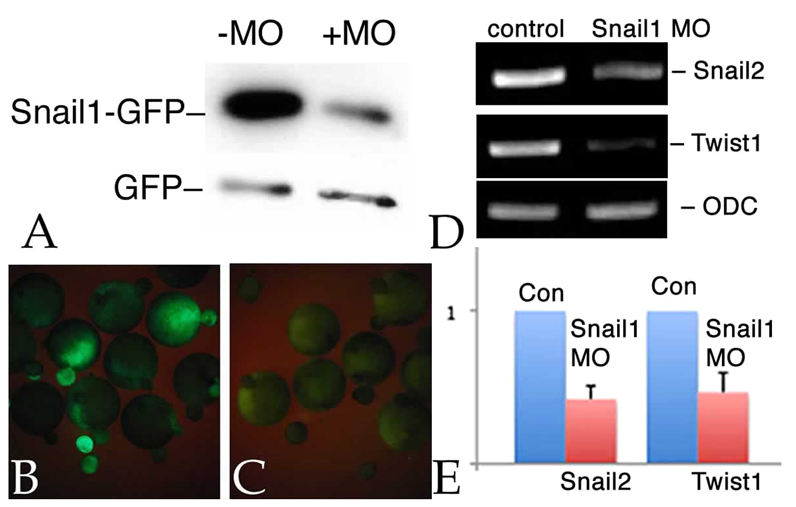Fig. 1.

snail1 MO effects. Xenopus embryos were injected with RNAs encoding myc-tagged GFP (mt-GFP; 50 pg/embryo) and UTR-Snail1-GFP (which latter includes the target of the snail1 MO) RNAs (600 pg/embryo), either alone or together with the snail1 MO (7 ng/embryo). (A) Immunoblot analysis of stage 11 embryos using an anti-GFP antibody revealed a clear and specific reduction in the accumulation of Snail1-GFP as compared with GFP in the snail1 MO-injected sample. (B,C) UTR-Snail1-GFP RNA was injected into one cell of 2-cell embryos either alone (B) or together with the snail1 MO (C). At stage 11, the snail1 MO greatly reduced UTR-Snail1-GFP fluorescence. (D,E) RT-PCR (D) and qPCR (E) analyses indicate that the injection of the snail1 MO into both cells of 2-cell embryos led to a specific reduction in the levels of twist1 and snail2 RNAs at stage 11. Ornithine decarboxylase (ODC) RNA was used to control for non-specific effects. Error bars indicate s.d.
